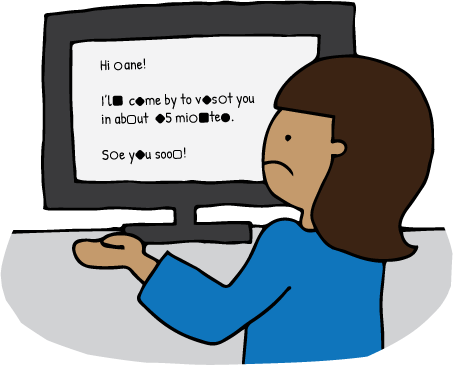What if?
Heads up!
To do this activity it's expected you understand the content covered in the following:

What if computers had no way of finding out if an error had occurred when reading a file or receiving transmitted data? Where do you think we would be with technology? Write a report that explains this.
An example of what this could look like is your friend sends you a file and you open it, but some of the files data has been changed so that when you open it you can see some words, but there is some “gobbledygook” writing as well.
Another example is you have clicked to open an app on your device, but it doesn’t open and just freezes.


